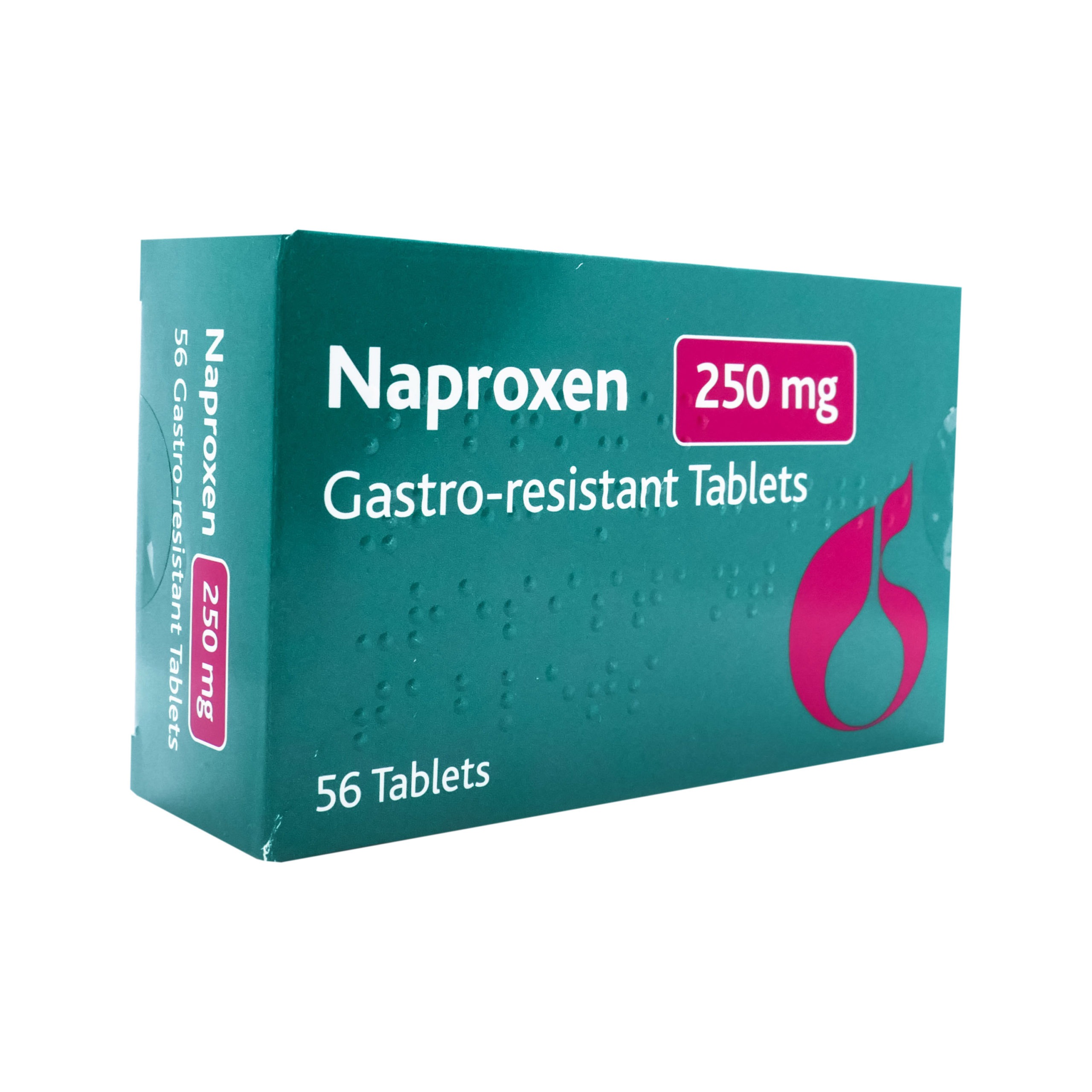Description
Naproxen is a long-established and widely used prescription-only non-steroidal anti-inflammatory drug (NSAID), known for its potent anti-inflammatory and analgesic properties. It is commonly prescribed to manage acute and chronic pain conditions, particularly those associated with inflammation. These include a wide range of musculoskeletal and joint disorders such as osteoarthritis, rheumatoid arthritis, ankylosing spondylitis, tendonitis, and bursitis. Naproxen is also frequently recommended for treating painful menstrual cramps (dysmenorrhoea), soft tissue injuries like sprains or strains, and acute gout attacks. Available in 250 mg and 500 mg strengths, the tablets provide effective relief with the convenience of twice-daily dosing in most cases.
How It Works
Naproxen belongs to the NSAID class of medicines and works by inhibiting the cyclooxygenase (COX) enzymes, specifically COX-1 and COX-2. These enzymes are essential for the synthesis of prostaglandins—chemicals that mediate pain, fever, and inflammation in the body. By reducing the production of prostaglandins, Naproxen helps to relieve pain, swelling, and stiffness in inflamed joints and tissues. It also helps lower fever when present. Because it has a longer half-life compared to many other NSAIDs, Naproxen is suitable for twice-daily dosing, offering prolonged relief throughout the day and night. This makes it a practical and reliable choice for people with chronic inflammatory conditions who need consistent pain control.
Why Choose Naproxen
Naproxen is trusted by clinicians for its effectiveness in treating both short-term and chronic pain conditions. Its ability to significantly reduce inflammation and alleviate pain makes it a first-line treatment option for a variety of painful disorders. Many patients benefit from its long duration of action, which reduces the need for frequent dosing. Whether managing a sports injury or a long-standing condition such as arthritis, Naproxen can help restore mobility, reduce discomfort, and improve quality of life. It is available in multiple strengths, allowing doctors to tailor treatment to the patient’s specific needs and condition severity. When used as directed, Naproxen offers a balance of efficacy and safety for medium- to long-term use under appropriate medical supervision.
Important Note
Although Naproxen is effective at managing pain and inflammation, it is important to use this medication exactly as prescribed by a healthcare provider. Long-term or high-dose use may increase the risk of serious gastrointestinal side effects, including ulcers and bleeding, as well as cardiovascular complications. Patients with a history of stomach problems, heart disease, kidney issues, or those taking blood thinners should discuss risks thoroughly with their doctor. Naproxen should be taken with food or milk to reduce the risk of stomach upset. Do not combine with other NSAIDs unless advised. Regular monitoring may be required during prolonged therapy, particularly in elderly patients or those with underlying health conditions.

